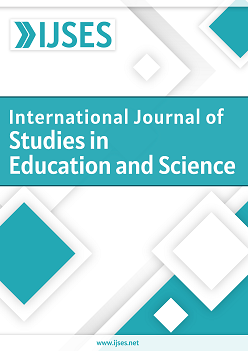Development and Validation of an Assessment Tool for Measuring Innovative Thinking in STEM Students
DOI:
https://doi.org/10.46328/ijses.120Keywords:
Development and validation, Assessment tool, Innovative thinking, STEM students, Hilongos national, Vocational schoolAbstract
The researchers conducted this study to develop and validate instrument an assessment tool for measuring innovative thinking in STEM students of Hilongos National Vocational School, Hilongos, Leyte, in 2024. It was done in three-phases: (1) Construct Specification and Item Creation; (2) Content Validation; and (3) Internal Consistency Assessment. Figure 1 shows the overview of the instrument development and validation process adopted from Bazhan et al. (2023) with modifications. As to content validity, the expert panel members evaluated the 150 items based on the four-point scale. Then, CVI for each item was calculated. Items are retained if they have a Content Validity Ratio (CVR) of 0.60 or higher and a Content Validity Index (CVI) of 0.80 or higher, while items are eliminated if they fall below either criterion, with a CVR of less than 0.60 or a CVI of less than 0.80. The remaining items were revised to satisfy the recommendations of the experts in terms of the consistency of statements’ verb tenses as well as the points of view utilized. As to internal consistency, it revealed that the reliability of the five constructs is greater than 0.90, indicating that the reliability is acceptable. This implies that all items demonstrated a valid internal consistency. Cronbach’s α between 0.8 to 1 shows good reliability, between 0.6 to 0.79 indicates the reliability is acceptable, and less than 0.6 indicates poor reliability. The developed questionnaire for measuring innovative thinking in STEM students exhibited strong reliability and content validity. The instrument effectively captured the core dimensions of innovative thinking, such as observing, questioning, experimenting, idea networking, and associating. The factor analysis results supported the instrument's underlying structure, and Cronbach's alpha values indicated high internal consistency. These findings suggest that the questionnaire is a reliable and valid tool for assessing innovative thinking in STEM students.References
Nacion, R.H. (2025). Development and validation of an assessment tool for measuring innovative thinking in STEM students. International Journal of Studies in Education and Science (IJSES), 6(1), 1-18. https://doi.org/10.46328/ijses.120
Downloads
Published
Issue
Section
License
Copyright (c) 2025 International Journal of Studies in Education and Science

This work is licensed under a Creative Commons Attribution-NonCommercial-ShareAlike 4.0 International License.
Articles may be used for research, teaching, and private study purposes. Authors alone are responsible for the contents of their articles. The journal owns the copyright of the articles. The publisher shall not be liable for any loss, actions, claims, proceedings, demand, or costs or damages whatsoever or howsoever caused arising directly or indirectly in connection with or arising out of the use of the research material.
The author(s) of a manuscript agree that if the manuscript is accepted for publication in the International Journal of Studies in Education and Science (IJSES), the published article will be copyrighted using a Creative Commons “Attribution 4.0 International” license. This license allows others to freely copy, distribute, and display the copyrighted work, and derivative works based upon it, under certain specified conditions.
Authors are responsible for obtaining written permission to include any images or artwork for which they do not hold copyright in their articles, or to adapt any such images or artwork for inclusion in their articles. The copyright holder must be made explicitly aware that the image(s) or artwork will be made freely available online as part of the article under a Creative Commons “Attribution 4.0 International” license.

This work is licensed under a Creative Commons Attribution-NonCommercial-ShareAlike 4.0 International License.





